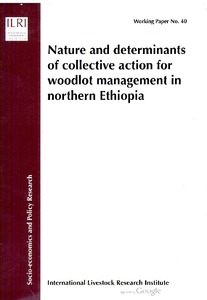Location
Vision, mission and strategy
ILRI's strategy 2013-2022 was approved in December 2012. It emerged from a wide processof consultation and engagement.
ILRI envisions... a world where all people have access to enough food and livelihood options to fulfil their potential.
ILRI’s mission is... to improve food and nutritional security and to reduce poverty in developing countries through research for efficient, safe and sustainable use of livestock—ensuring better lives through livestock.
ILRI’s three strategic objectives are:
- with partners, to develop, test, adapt and promote science-based practices that—being sustainable and scalable—achieve better lives through livestock.
- with partners,to provide compelling scientific evidence in ways that persuade decision-makers—from farms to boardrooms and parliaments—that smarter policies and bigger livestock investments can deliver significant socio-economic, health and environmental dividends to both poor nations and households.
- with partners,to increase capacity among ILRI’s key stakeholders to make better use of livestock science and investments for better lives through livestock.
This is ILRI’s second ten-year strategy. It incorporates a number of changes, many based on learning from the previous strategy (2000–2010, initially produced in 2000 and modified in 2002), an interim strategy (2011–2012) and an assessment of the external and internal environments in which the institute operates.
Members:
Resources
Displaying 881 - 885 of 1152Policies, people and land use change in Uganda: a case study in Ntungamo, Lake Mburo and Sango Bay sites
Nature and determinants of collective action for woodlot management in northern Ethiopia
Mapping poverty and livestock in the developing world
This study produces a set of maps and tables that locate significant populations of poor livestock keepers and has broadly assessed how poor livestock keeping populations are likely to change over the next 3-5 decades. The outputs of the study are based on innovative analysis using new global data sets.
Measuring productivity in African agriculture: A survey of applications of the superlative index numbers approach
Livestock to 2020 in South-East Asia: implications for policies and development strategies
Factors driving the demand for livestock products in the developing countries are primarily population growth, urbanisation and income growth. These factors are expected to continue to fuel the increase in milk and meat consumption in the next millennium, creating a veritable livestock revolution. This paper looks into the value of food consumption increases for meat, milk, fish and major cereals (1970-1995). it illustrates total meat consumption and per capita meat consumption by country; cereals used as feed by major region; and projected real prices, 2020.






